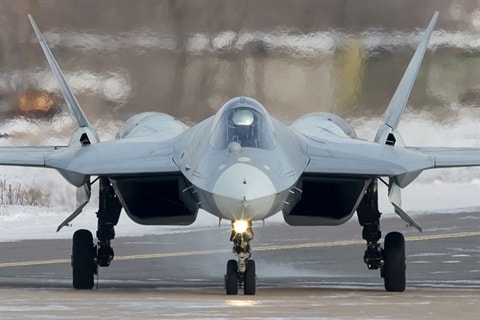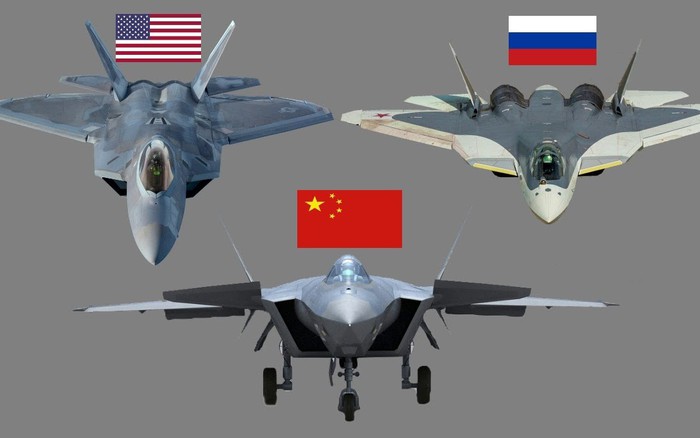The Sukhoi Su-57, Russia’s fifth-generation stealth fighter, represents a significant leap forward in aerial combat technology. Developed by the Sukhoi Design Bureau, this advanced multirole fighter jet is designed to replace the aging fleet of Russian air superiority fighters and serve as the backbone of the Russian Air Force for years to come. With its stealth capabilities, advanced avionics, and impressive agility, the Su-57 is poised to redefine the dynamics of modern air warfare.
A New Era of Stealth and Supremacy
The Su-57 is Russia’s answer to the United States’ F-22 Raptor and F-35 Lightning II, entering the global stage with a mission to establish air superiority and dominance in various combat scenarios. The fighter’s stealth design is one of its most notable features, with an emphasis on reducing radar cross-section (RCS) to evade enemy detection. This stealth capability is complemented by its use of composite materials, internal weapons bays, and a special coating that absorbs radar waves, making the Su-57 difficult to track by enemy radars.
Unlike earlier Russian fighters, the Su-57 is also equipped with advanced avionics and sensor fusion technology, allowing it to integrate data from various sources to provide the pilot with a comprehensive understanding of the battlefield. This level of situational awareness is crucial in modern air combat, where decisions must be made in split seconds.
Power and Agility
Under the hood, the Su-57 is powered by two advanced engines designed to offer superior thrust-to-weight ratios and supercruise capabilities—enabling the jet to sustain supersonic speeds without the use of afterburners. This feature not only enhances its speed and range but also improves fuel efficiency, allowing the Su-57 to cover greater distances without the need for refueling.
The aircraft’s agility is another area where it shines. Equipped with thrust vectoring nozzles and an advanced fly-by-wire system, the Su-57 can perform extreme maneuvers that would be impossible for most other jets. These capabilities make it a formidable opponent in dogfights, allowing it to outmaneuver adversaries and position itself for the kill.
Armament and Combat Capabilities
The Su-57’s internal weapons bays are capable of carrying a variety of air-to-air, air-to-ground, and anti-ship missiles, as well as precision-guided bombs. This versatility allows the fighter to engage a wide range of targets, from enemy aircraft and ground installations to naval vessels. The Su-57 is also expected to be equipped with new-generation hypersonic missiles, giving it a significant edge in both offensive and defensive operations.
In addition to its formidable arsenal, the Su-57’s design allows it to operate in electronic warfare environments, where it can jam enemy radar and communications, further complicating the efforts of adversaries to detect and engage the aircraft.

Challenges and Controversies
Despite its impressive features, the development of the Su-57 has not been without challenges. The program has faced delays, budget constraints, and technical difficulties, leading to a slower-than-expected production rate. Initially, there were also concerns about the reliability and performance of the engines, which have since been addressed in the latest production models.
Another point of contention has been the Su-57’s export potential. While several countries have expressed interest in acquiring the jet, the high costs and Russia’s reluctance to share its most advanced technologies have limited the fighter’s international sales. Nonetheless, the Su-57 remains a key component of Russia’s military modernization efforts, with ongoing improvements and upgrades planned for future iterations.
The Future of the Su-57
As the Su-57 continues to enter service with the Russian Air Force, its impact on global military balance is closely watched by analysts and strategists worldwide. The jet’s advanced capabilities, combined with Russia’s strategic intentions, make it a critical asset in maintaining air superiority in any potential conflict.
Looking ahead, Russia is expected to develop enhanced variants of the Su-57, incorporating even more advanced technology, such as artificial intelligence (AI) for autonomous operations and improved stealth coatings. These developments will ensure that the Su-57 remains relevant in an ever-evolving battlefield.

Conclusion
The Sukhoi Su-57 is more than just an advanced fighter jet; it symbolizes Russia’s determination to maintain its position as a global military power. With its combination of stealth, agility, and firepower, the Su-57 is set to be a formidable presence in the skies for decades to come. As it continues to evolve and improve, this fifth-generation fighter will undoubtedly play a key role in shaping the future of aerial warfare, challenging the dominance of Western-made jets and solidifying Russia’s place in the pantheon of modern military aviation.





